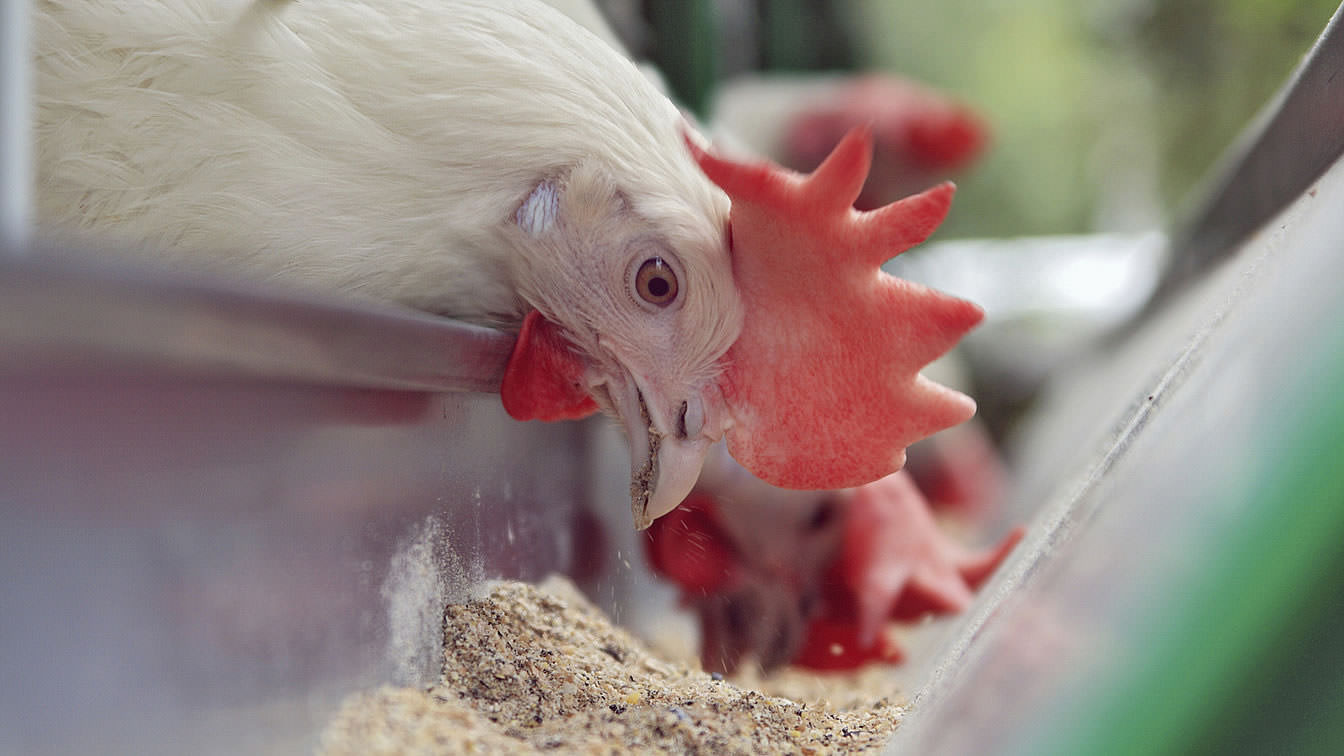- You have no items in your shopping cart
- Subtotal: ₵0.00
Feed intake
The nutrient intake of poultry is affected by both the nutrient composition of the diet and the amount of feed eaten or feed intake. The optimum nutrient intake for poultry raised commercially will depend on the commercial goals of the poultry enterprise.
The goals in feeding poultry differ between different classes of poultry. In general, for poultry raised to provide meat, such as broilers, the aim is to produce the maximum body weight gain for the minimum cost of feed while controlling the amount of fat on the carcass. For egg laying birds, the aim is to maximise egg production for the minimum cost of feed while controlling the egg size and egg quality. For mature egg laying birds this generally entails maintaining a relatively stable body weight. These different goals, along with differences in digestion and absorption of nutrients, require different levels of nutrients to be provided to different classes of poultry.
The nutrient intake of poultry can be controlled by limiting the amount of feed available to be eaten, by adjusting the nutrient content of the diet to match voluntary feed intake or by manipulating the lighting program through increasing or decreasing the duration of darkness. Allowing poultry to eat as much as they want is called ad libitum feeding.
There are a range of factors that can affect the voluntary feed intake of poultry, these include:
- Breed or strain
- Age
- Nutrient balance of the diet
- Ambient temperature
- Health and welfare status of the birds
- Accessibility of the feed
- Flock density
- In addition, certain feed ingredients, poor feed quality or feed contamination can have adverse effects on voluntary feed intake due to poor palatability or the presence of toxic factors.
Suppliers of commercial poultry provide information on the optimum nutrient and feed intakes for their birds throughout the production cycle. Feed intake and production performance of flocks should be monitored and adjustments made to the diet composition where required to keep performance on track. In particular, feed intake is readily affected by ambient temperature, with feed intake increasing at lower ambient temperatures and decreasing at higher ambient temperatures. In such cases, the diet may need to be reformulated to adjust nutrient intake to match changes in voluntary feed intake as a result of changes in ambient temperature. As an example, in high ambient temperatures a more concentrated diet can compensate the decreased nutrient intake occurring as a result of lower voluntary feed intake. Accessibility to feed is sometimes overlooked as a limiting factor and can be caused through inappropriate or poorly adjusted feeding equipment or inadequate feeding space due to overstocking of facilities. The height of the feeders should be adjusted according to the flock age to provide easy access to the feed for all the birds.
(c) www.poultryhub.com


